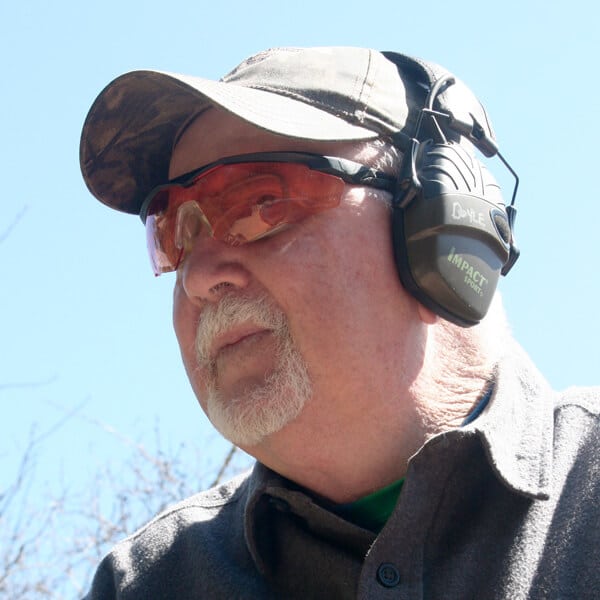Will You Be Able to Shoot in Time to Stop an Attack?
October 5th, 2023
7 minute read
Today, personal safety is just about on everyone’s mind. In certain parts of the country, there has been a huge spike in violent crime, which has caused many of us to take a keener interest in the places we might be traveling to and what might be going on in our immediate area.
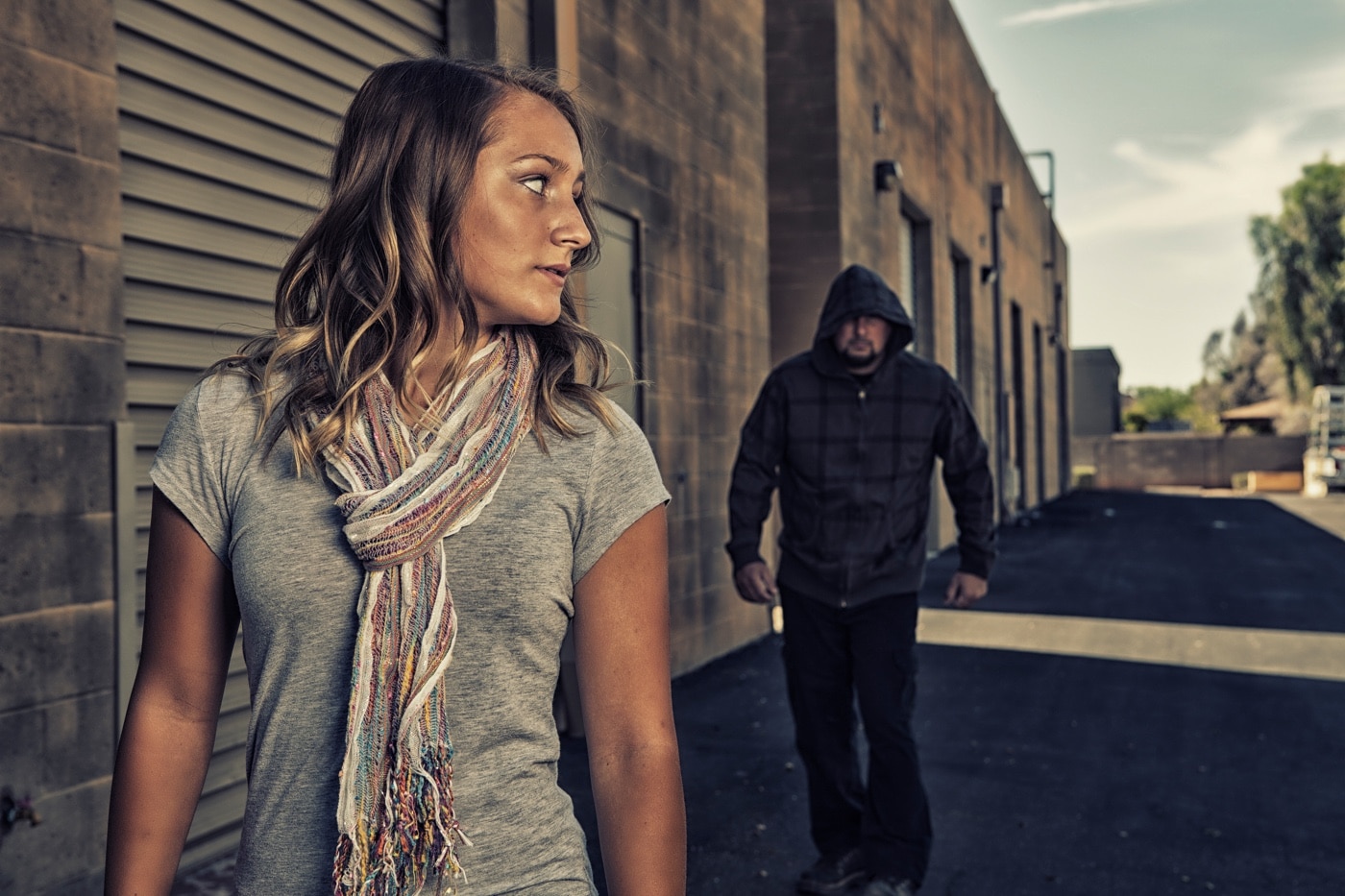
While the likelihood of being the intended victim of a violent crime might be significantly less in suburban and rural areas, by no means are the folks out there immune. As a result, a record number of responsible citizens have taken up carrying concealed firearms and other tools to maintain control over their environment in that worst-case scenario.
The Mechanics
I have studied interpersonal human conflict for the better part of my adult life, and while no two events are exactly the same, there are a number of dynamics that are present in a great many of them. The lighting conditions are often poor, distances are short, and things tend to unravel very fast. Although many times there may be some forewarning of danger which may give you time to avoid it, that’s not always the case. I would submit that things might be very different for a police officer who knows that he is responding to potential danger versus an armed citizen who finds himself caught up in the middle of something with little or no warning.
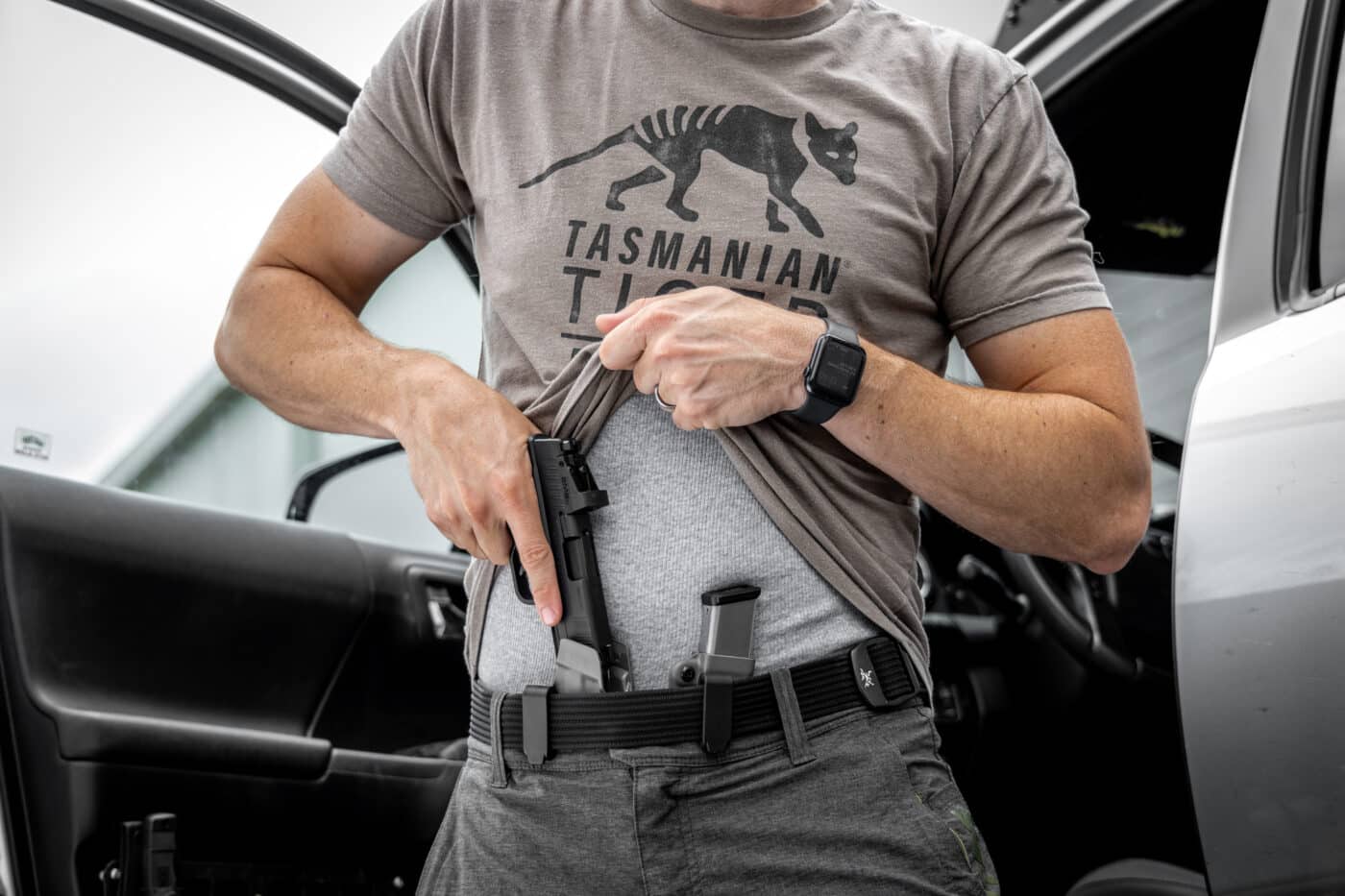
As much as we would like to maintain that high degree of awareness whenever we are out and about, I would submit there are some situations we might find ourselves in where we simply don’t have enough eyes in our head to take in the whole picture. Consider a crowded city street or the checkout counter at the convenience store. We keep the radar up and running as best we can, but like it or not, you will have individuals whose intentions cannot be assessed in very close proximity. Should you have to react to a threat, it’s pretty much a given that you will be playing catch up, and the ability to access life-saving gear is critical.
The Holstered Firearm
Choosing the right firearm and holster combination can be a challenging task, but with a little thought you will be able to find out what works best for you. Body type, clothing worn and social settings you will find yourself in all play into the equation. High on that list of considerations is that your chosen firearm will be concealed on your person, which brings the Goldilocks factor into play. Too large a package will prove difficult to conceal, while a small, easy-to-hide one might be difficult to shoot to a high standard and may prove ineffective. Left to my own designs, I much prefer a compact-size pistol as the ideal compromise that best suits my lifestyle. You, however, may have different needs.
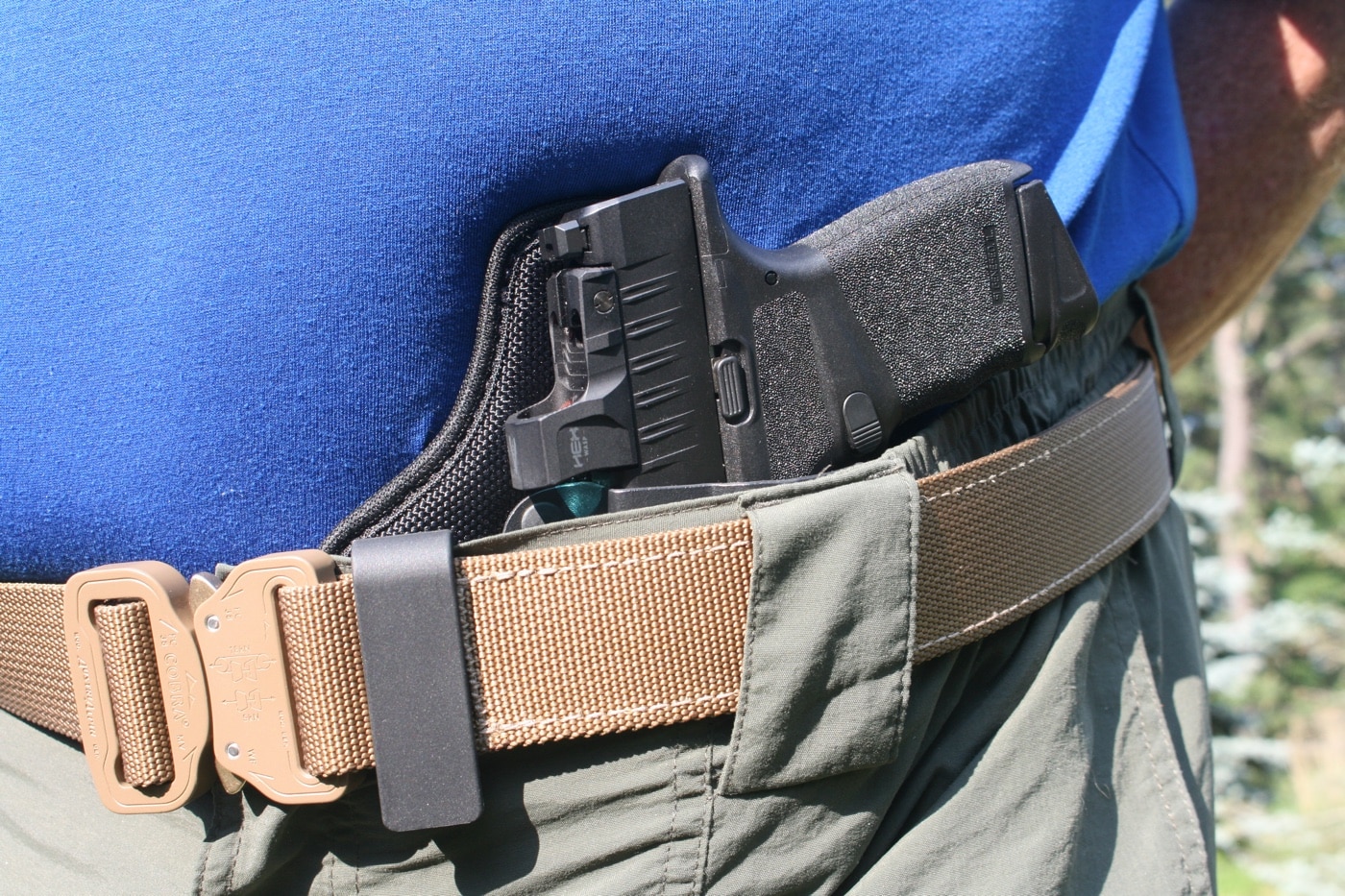
I would strongly urge you to pay particular attention to holster selection. It has been my observation that lots of folks will spend days considering their choice for a carry pistol but will settle for the first holster they come across that fits their pistol. Not only does your holster have to be comfortable, but it must allow you the capability to quickly draw your handgun under less-than-ideal conditions.
Inside-the-waistband (IWB) and appendix inside-the-waistband holsters (AIWB) are discreet and reasonably fast to draw from. On the downside, the comfort level for inside the pants rigs makes them unsuitable for many users. There are, of course, a great many outside-the-waistband holsters (OWB) that might just make the cut. Holster cant and ride high on the belt are some other elements you may want to consider when choosing your everyday carry holster.
While crossdraw and shoulder holsters wouldn’t be my first choice for concealed carry, I recognize other folks have some very different needs and applications. For example, when in a very cold environment, drawing a firearm buried under multiple layers of clothing may be an exercise in futility. A possible solution may be a shoulder holster. Do you spend most of your day seated in a chair or driving? In those instances, a crossdraw holster may have something to offer.
Don’t Bury Your Gun
It’s a pretty safe bet that our handgun will probably be beneath one layer of clothing. Do you practice the drawstroke with the type of clothing you usually wear? If not, you are selling yourself short. Drawing is a skill we can work on when off the range and regular practice will pay dividends. Bear in mind that drawing from a closed front garment is very different than an open front garment. A loose sweatshirt requires lifting the garment out of the way, while an open front garment such as a jacket requires a sweep. My informal wardrobe includes multiple examples of each style, so I practice accordingly.
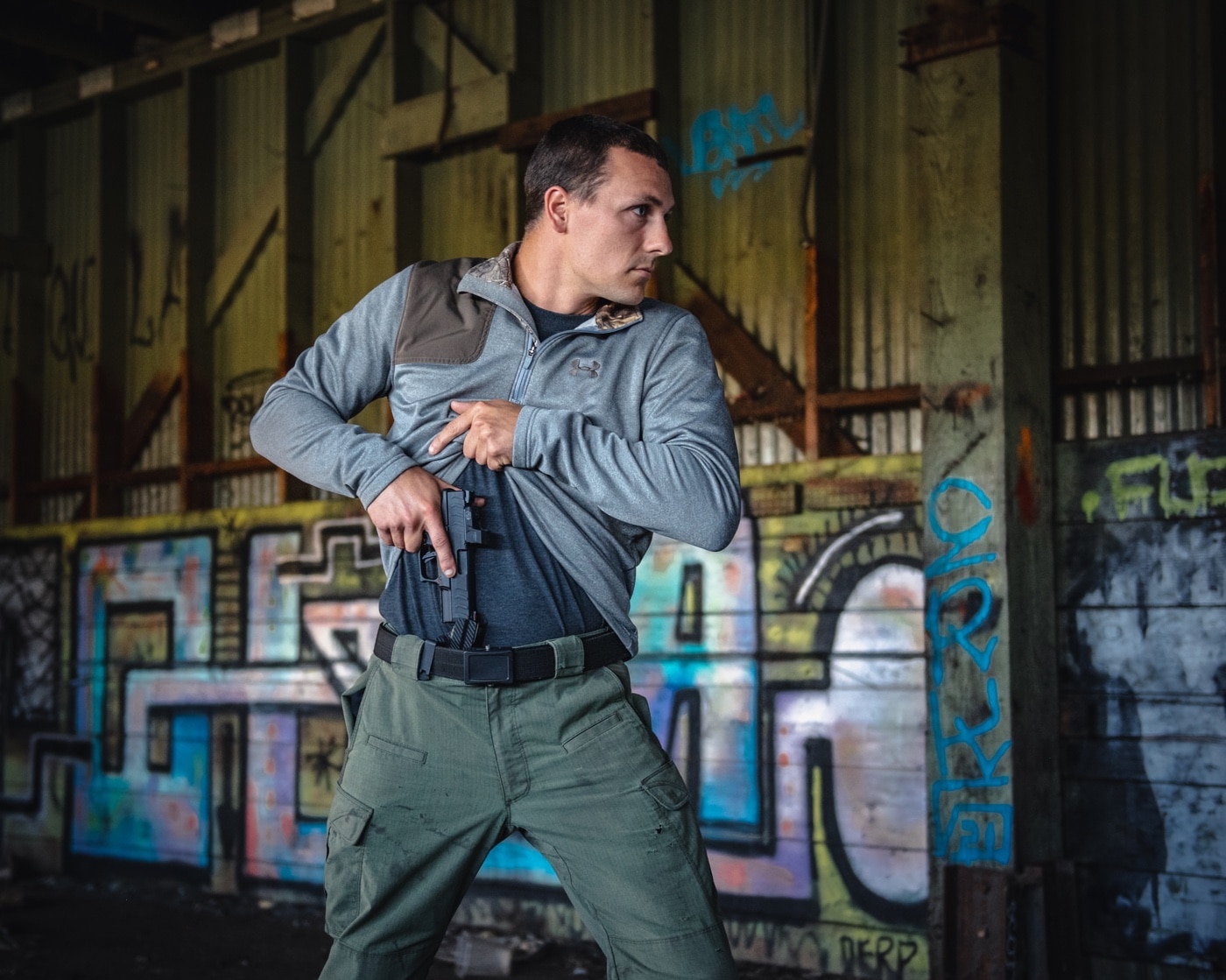
No matter what type of clothing you wear or what your everyday carry package consists of, the bottom line is how fast you can get into action. A realistic goal to strive for is two seconds from the stimulus to shot break. This is best achieved by having your gun in an accessible location and not burying it under more than one layer of clothing.
Extra Ammunition
Unlike law enforcement officers, responsible citizens who are involved in gunplay might rarely have a need to reload. With that said, you still need to have extra ammunition available to quickly get your firearm up to full complement. Even if you were able to resolve the immediate crisis with just a few rounds, do you really want to hang around an unsettled environment with a half-loaded gun waiting for the cavalry to arrive?
At least one complete reload for whatever type of gun you are carrying remains the bottom line. And, like your pistol, spare ammunition needs to be accessible. Today, there are all sorts of magazine pouches to suit your needs including pouches worn inside or outside the belt or even the pocket. Again, the key is the ability to get to those magazines quickly.
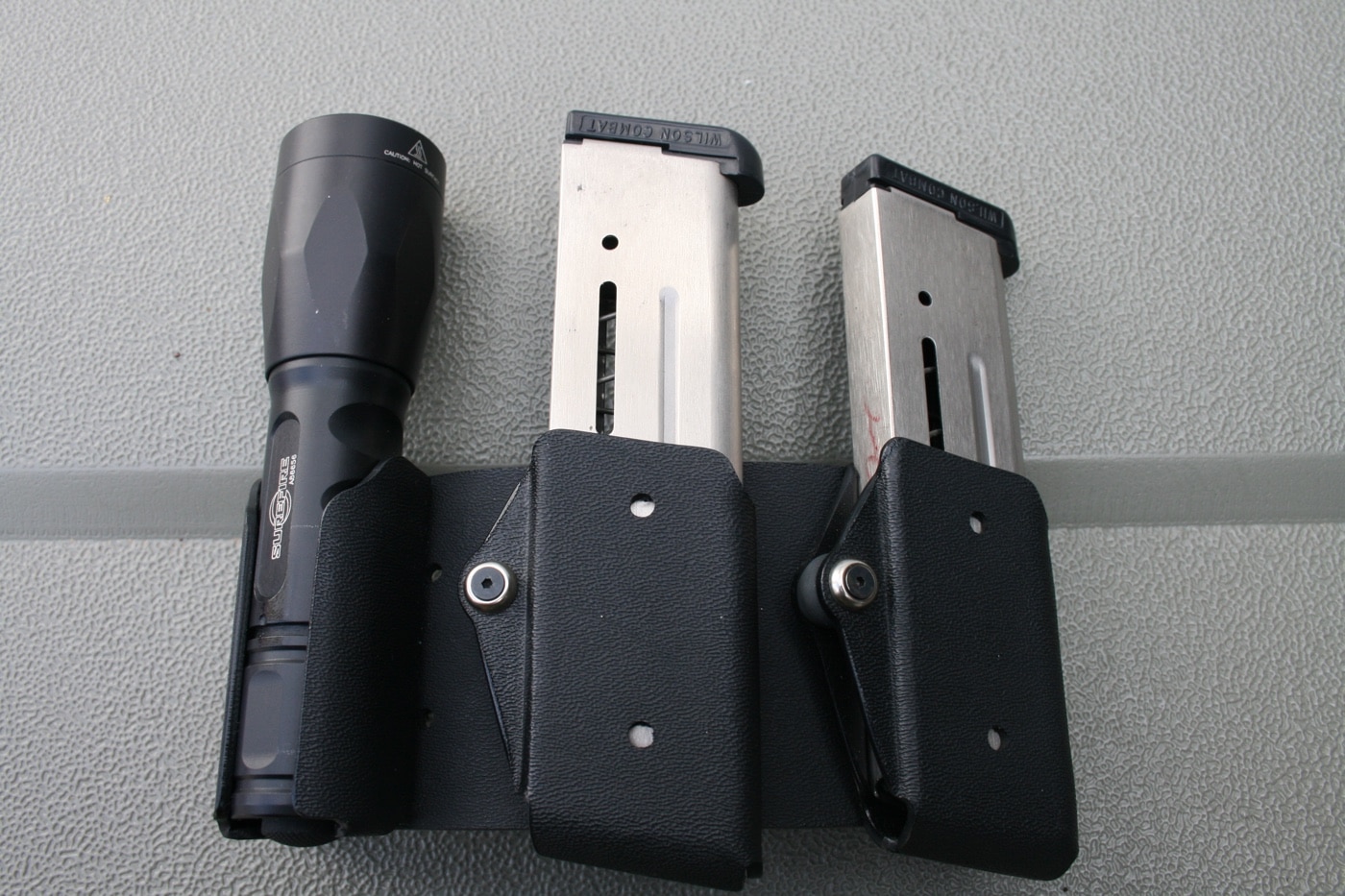
A well-engineered magazine pouch will hold your spare magazines securely, even when engaged in physical activity such as running or grappling. “Almost fits” doesn’t make it here and remains a recipe for lost magazines. The pouch should be cut low enough that you can achieve a proper grip as it is drawn without having to make adjustments as you bring the magazine up to the magazine well. When time is of the essence, fishing around in a pocket for an extra magazine remains a liability.
Other Critical Gear
Like your pistol and spare ammunition, flashlights and various less-lethal tools need to be parked somewhere on the body where you can get to them quickly. When dressed in my everyday casual attire, I clip a small, tactical flashlight to the top of the support side front pocket and go about my business. My flashlight not only provides me with a tool that I can better sort out the intentions of sketchy people, but can also be used as a shooting aid or a weapon. But like the other tools discussed herein, if it’s zipped up in the pocket of your winter jacket, you may not be able to get to it in time of need.
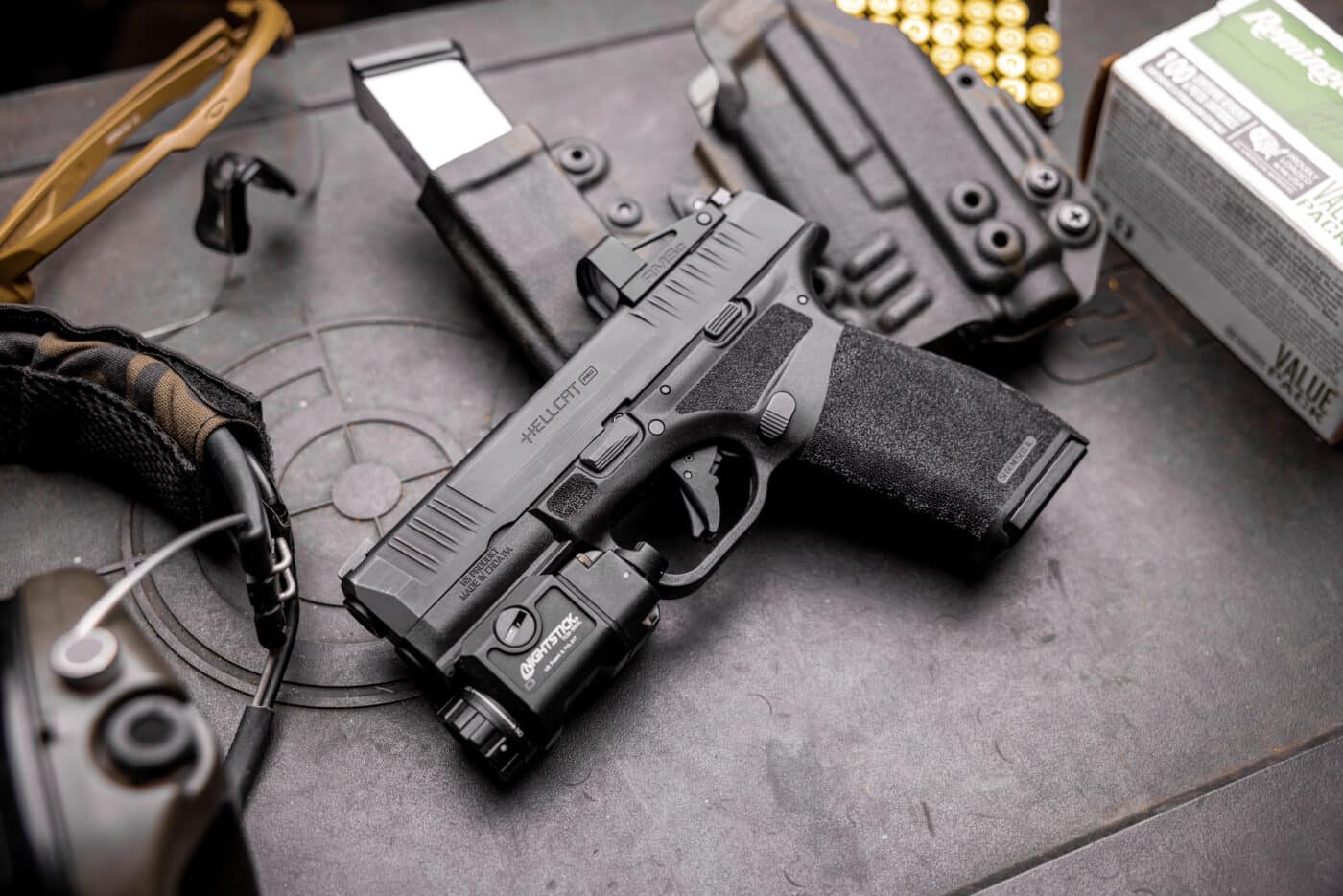
Again, there are all sorts of carriers for flashlights, OC spray, and other tools out there for the taking. When I’m working at my job I often use a combination pouch that can hold a magazine or two plus my flashlight. My gear is right there when I need it and there is no question at all as to where I parked it on my person.
Do you carry a knife? Is it strictly a utility tool or might it be used for personal defense? If it’s a utility tool, it really doesn’t matter where you place it. I’m hardly an expert on fighting with a knife, but in the training I have had, a small accessible fixed blade seems to be the way to go. There is just too much that can go wrong in quickly getting a folder into action. If you go that route, be absolutely sure you are in compliance with the law.
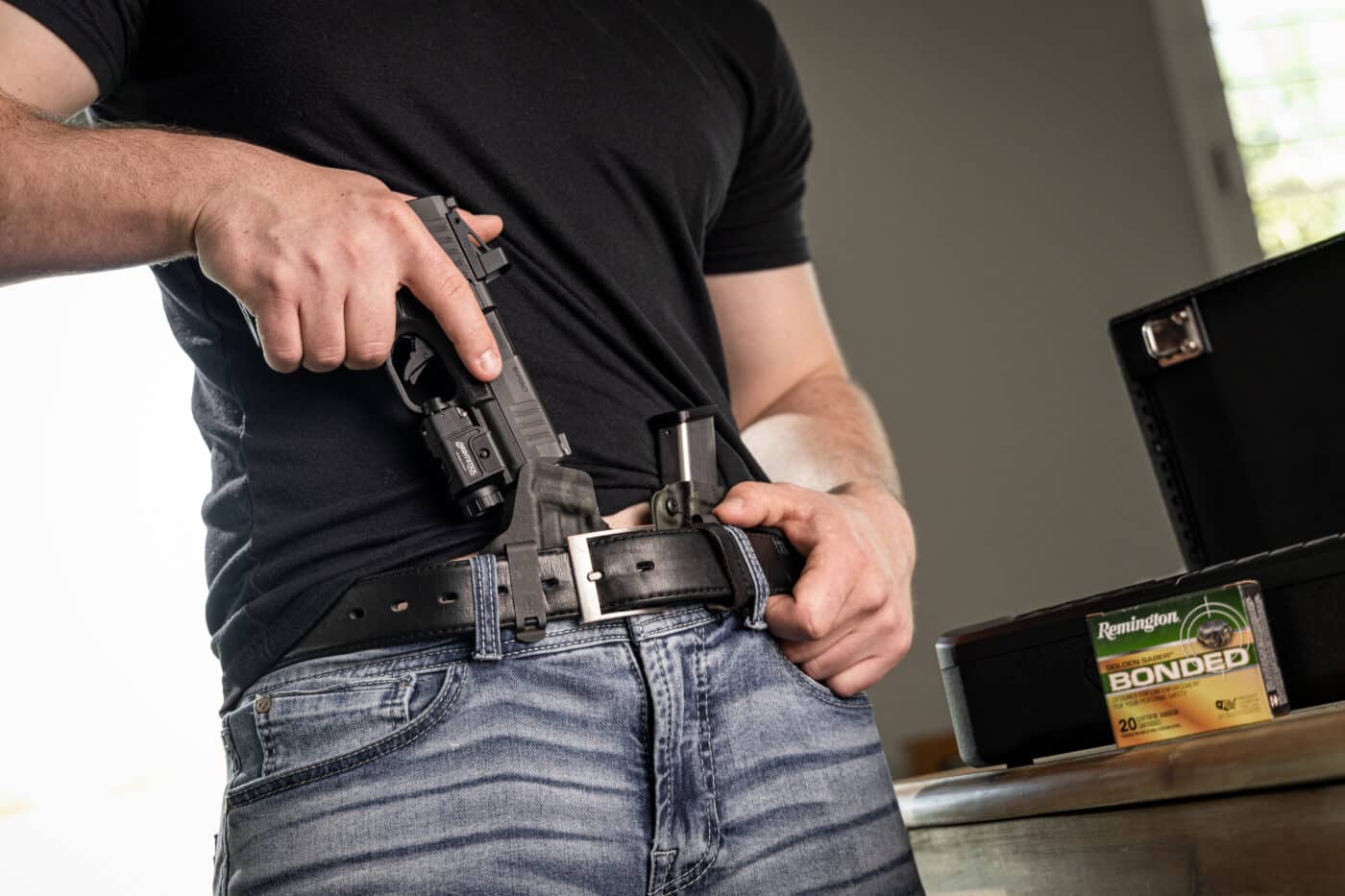
Conclusion
So team, stay switched on and be aware of your surroundings. The best gear in the world isn’t going to help your cause if you can’t get to it when responding to sudden danger. Ready access to life-saving equipment may very well tip the odds back in your favor.
Editor’s Note: Please be sure to check out The Armory Life Forum, where you can comment about our daily articles, as well as just talk guns and gear. Click the “Go To Forum Thread” link below to jump in!
Join the Discussion
Continue Reading
Did you enjoy this article?

 456
456





